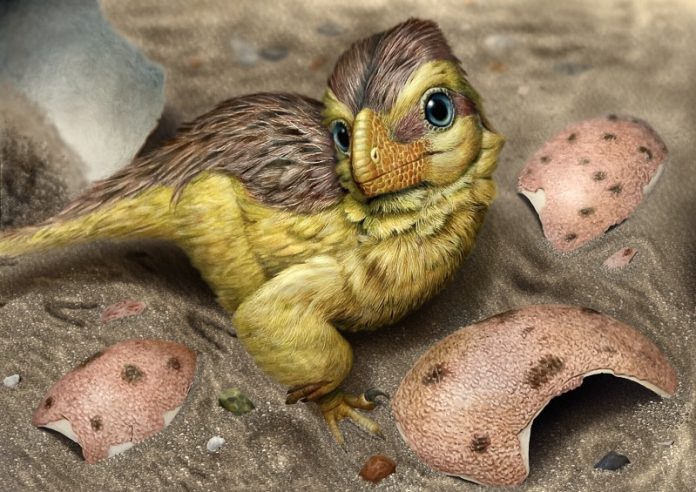
Scientists have discovered a groundbreaking way to measure time in the distant past—by dating fossilized dinosaur eggshells.
This new technique could transform how researchers determine the ages of fossil sites around the world, filling in major gaps in our understanding of prehistoric life.
The international study, led by Dr. Ryan Tucker from Stellenbosch University in South Africa, has been published in Communications Earth & Environment.
Until now, many fossil sites could only be roughly dated, making it difficult to connect species and ecosystems across different regions and time periods.
Traditionally, researchers have relied on dating minerals like zircon or apatite found in volcanic ash near fossils. But these minerals are not always present, and direct dating of fossils such as bones or teeth has often produced unreliable results.
Dr. Tucker’s team decided to try something completely different.
They used a method called uranium–lead (U–Pb) dating to measure tiny amounts of uranium and lead trapped within the calcite crystals of fossilized dinosaur eggshells.
These radioactive elements decay at a steady rate over millions of years, acting like a built-in clock that records the moment the eggs were buried.
The researchers tested the method on dinosaur eggs from Utah in the United States and from the Gobi Desert in Mongolia.
The results were remarkably accurate—within about 5% of the dates obtained from nearby volcanic ash layers.
In Mongolia, the team even determined the first-ever direct age for a famous dinosaur nesting site, showing it was about 75 million years old.
“Eggshell calcite is remarkably versatile,” said Dr. Tucker. “It gives us a new way to date fossil sites where volcanic layers are missing—a problem that has held back paleontology for decades.”
The study involved scientists from several institutions, including the North Carolina Museum of Natural Sciences, North Carolina State University, the Colorado School of Mines, the Mongolian Academy of Sciences, and universities in Brazil.
Fieldwork in Mongolia was supported by the National Geographic Society and the U.S. National Science Foundation.
By showing that dinosaur eggshells can reliably record the passage of time, the research bridges the gap between biology and geology.
Co-author Dr. Lindsay Zanno from North Carolina State University called the breakthrough “a paleontologist’s dream,” adding, “With this new tool, we can finally unlock timelines of dinosaur evolution that were previously impossible to pinpoint.”
Source: KSR.



